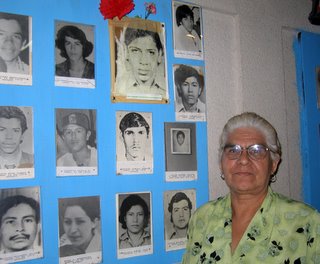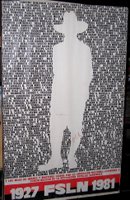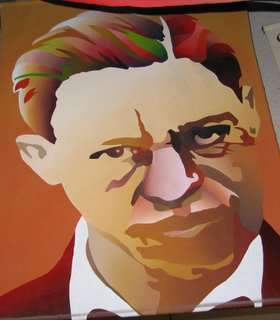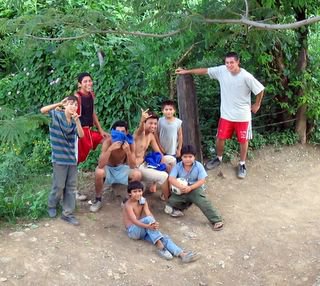San Juan del Sur, Nicaragua
11º 15.33' N, 085º 52.56' W. At anchor. I've just about recovered from my 26 hour trip from Puesta del Sol to San Juan del Sur. Pulled away from the dock on Tuesday at 1000 hours and motored for the first few hours. But then the wind came up and I had an excellent sail for the rest of the day until about 1½ hours after dark, with all sails flying. Then it was back to the motor, although I left the full Main and staysail in place. The mistake I made was not reefing the Main while there was no wind, given that this is the beginning of the Papagayo gale season in this area.
And sure enough, at about 0100 hrs on Wednesday morning, the wind came up again, this time as an Easterly from shore. With the movement of the boat, the apparent wind direction was therefore on the nose, port nostril. I then went through a rather slow and laborious reefing process in the dark.
Things never go smoothly in the dark. Not counting the irritation of constantly trying to avoid being tripped up or entangled by the two tethers of my safety harness. it was difficult to see what the various Mainsail lines were doing when I was at the mast. Being unable to get the clew reefing cringle down to the aft part of the boom, in spite of cranking on the reefing winch, I discovered that the dangling leech line had somehow got wrapped around the flailing 2nd reefing line and both had got jammed in the 1st reef block on the boom, along with the 1st reefing line.
It was blowing a bit at this point. The 1st reef tack was already on the reefing hook at the mast and the loose bottom part of the sail was now being a bit unfriendly, especially as I had to work on the downwind side of the boom. After freeing the 1st reef block, with the help of some ungentlemanly language (it's amazing how strong you become when you're really pissed off), I finally managed to complete the reef. But when tying up the loose area of sail at the reef points, I managed to trap a small stowaway insect which was constantly flashing like a white LED light. It eventually crawled its way to "freedom".
The good news was that my little fair weather autopilot kept the boat on course while I was out on deck, in spite of the wind and increasing waves. In fact, the autopilot never faltered throughout the trip, and held its course in 25 plus knots of wind, with short steep seas. This was good consolation for the lack of success I'd had earlier in the day trying to get my wind vane self steering to work. I guess that I don't have enough patience for the wind vane. The thing seems to work mechanically to some extent, but doesn't seem to turn the auxiliary rudder sufficiently to keep the boat on course. I'll have to try it again but using only the staysail and Main. The boat balances better in stronger winds when not using the big genoa.
The next 12 hours were under headwinds between 20 and 30 knots. I was between 5 and 7 miles from shore initially, trying to avoid the unlit fishing boats closer to shore, which I could see on the radar. As the seas started to get bigger and steeper, I tacked in nearer to shore a couple of times, although I had to tack back one time to avoid a small fleet of well lit fishing boats.
The bow got buried in waves constantly, and I think I took on some water through the chain locker as I had to pump out the bilge a couple of times. I need to find a way to make the two anchor chain hawses water tight. The cap on the secondary rode (anchor chain) hawse is OK for rain but not for when buried in a wave. And the plastic bags tightly stuffed beside and around the chain at the windlass hawse is inadequate. Possibly disconnecting the chain from the secondary anchor and dropping it into the chain locker when under way might be one way of enabling that hawse to be completely sealed. I'll have to think of something else for the windlass. But it's also possible that water was also getting in through other places. The forward cap rail was constantly awash, so there may be some recaulking required in that area. I also discovered after anchoring here that the steel plate on the cap rail under the anchor chain between the windlass and the bow roller, which protected the cap rail, had been torn off by the waves. There's just the three holes left where the bolts had been.
I really like staysails. With my boomed self tacking staysail and the deeply reefed Main, both being sheeted in tight on a close haul, tacking when needed was simply a matter of disengaging the autopilot and cranking the wheel. This sail combination works well in strong winds. My 2nd reef in the Main, for even stronger winds, brings the sail size down to that of a trysail. My hanked on staysail can also be reefed, bringing it down to a storm staysail. But I'd hate to have to reef that, given the severe conditions which would require it.
When I arrived at Bahia San Juan del Sur, the wind was still blowing briskly, but the water inside the bay was quite flat. As I entered the bay I passed the cruise liner, “Regal Princess”, which was anchored at the mouth. I had earlier seen this cruise ship at the dock as I passed Corinto, about 14 miles south of Puesta del Sol. It had passed me during the night.
Last night, when I climbed into my bunk, my batteries were down 17.4 amps from full. This morning when I got up, they were only down 11.5 amps, and this with the amp guzzling fridge running. It normally uses about 20 amps overnight. It was quite windy last night, so finally I'm getting some value from my wind generator. Today it has been blowing through the anchorage between 20 and 30 knots all day. So my batteries have been full all day, with the regulator cutting off power from the wind generator. I even cranked up the fridge a couple of notches to take advantage of the extra power.













 The political mural below is one example of many to be seen around Estelí and other locations.
The political mural below is one example of many to be seen around Estelí and other locations. 








